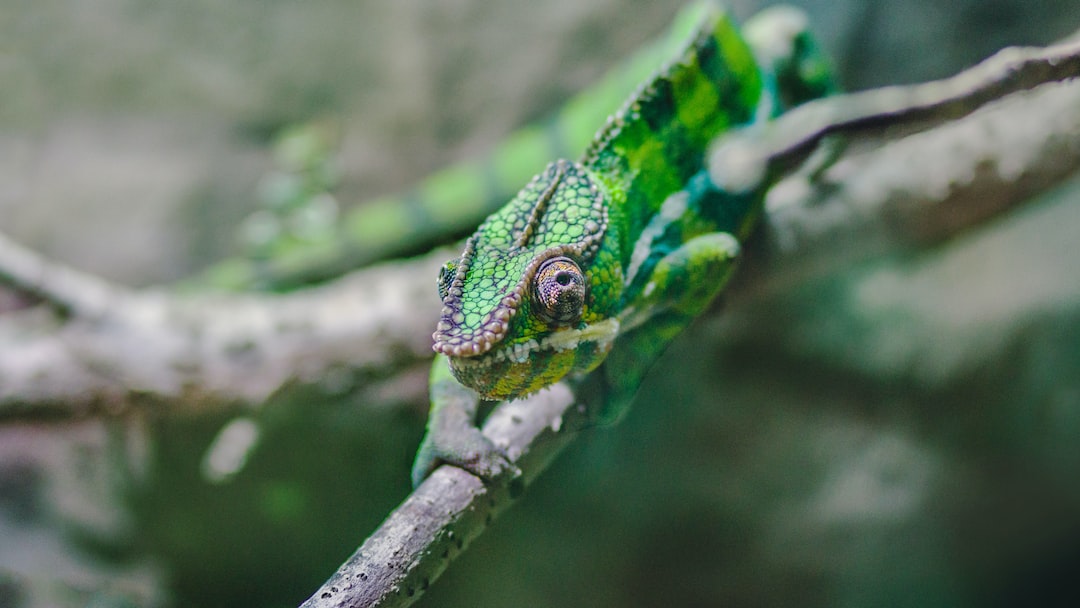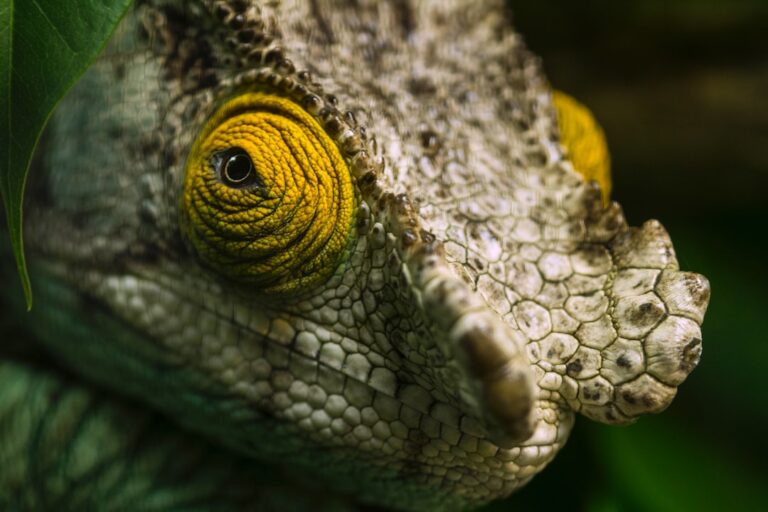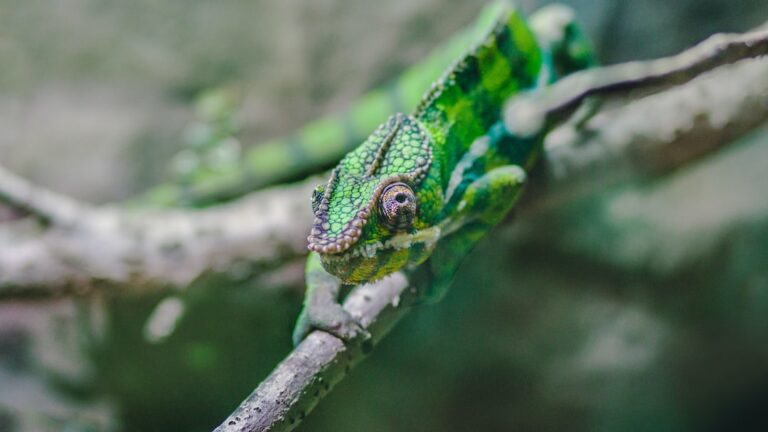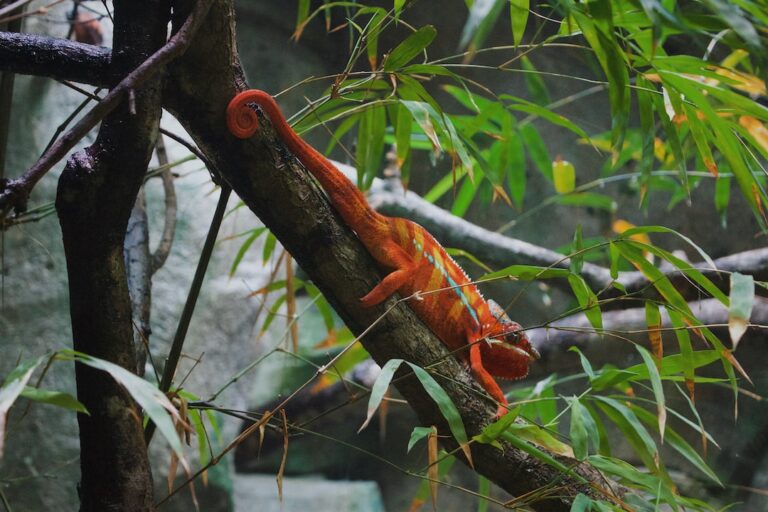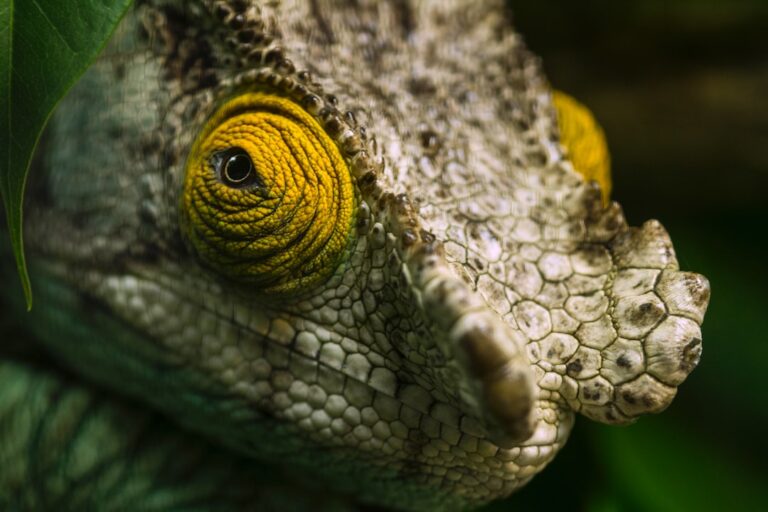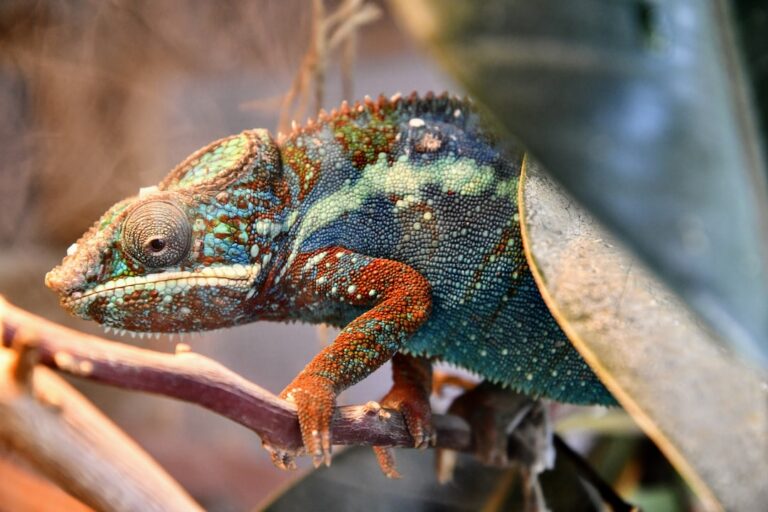Can Chameleons Eat Waxworms?
Chameleons are fascinating reptiles known for their ability to change color and blend into their surroundings. They are found in various parts of the world, including Africa, Madagascar, and parts of Asia and Europe. Chameleons have unique dietary needs, as they require a combination of insects and plant matter to thrive.
In the wild, chameleons primarily feed on insects such as crickets, grasshoppers, and flies. They also consume leaves, flowers, and fruits to supplement their diet. It is important for chameleon owners to replicate this balanced diet in captivity to ensure the health and well-being of their pets.
Table of Contents
What are Waxworms?
Waxworms are the larvae of the wax moth (Galleria mellonella). They are commonly used as feeder insects for reptiles and other insectivorous animals. Waxworms are soft-bodied and have a high fat content, making them an excellent source of nutrition for chameleons.
Waxworms are typically creamy white in color with a soft, plump body. They have a waxy appearance due to the presence of a protective coating on their skin. This coating helps them survive in beehives, where they feed on beeswax and honeycomb.
Waxworms can be found at pet stores that specialize in reptile supplies. They are usually sold in small containers or cups with bedding material to keep them alive and prevent them from escaping.
Nutritional Value of Waxworms for Chameleons
Waxworms are highly nutritious and provide a range of essential nutrients for chameleons. They are rich in protein, which is crucial for growth and development. Protein is also necessary for muscle function and tissue repair.
In addition to protein, waxworms contain a good amount of fat. While chameleons do not require a high-fat diet, a moderate amount of fat is beneficial for energy production. Fat also helps with the absorption of fat-soluble vitamins.
Waxworms also provide vitamins and minerals that are important for chameleon health. They are a good source of calcium, which is essential for strong bones and proper muscle function. They also contain vitamins A and D, which are necessary for vision, immune function, and overall well-being.
Compared to other common chameleon foods such as crickets and mealworms, waxworms have a higher fat content. This makes them a great option for chameleons that need to gain weight or require extra energy. However, it is important to feed waxworms in moderation to avoid an imbalance in the chameleon’s diet.
Benefits of Feeding Waxworms to Chameleons
Feeding waxworms to chameleons can have several benefits. Firstly, they provide a high-calorie meal that can help chameleons gain weight or recover from illness or injury. The high fat content of waxworms makes them an excellent choice for chameleons that need to bulk up.
Waxworms are also highly palatable to chameleons. Their soft bodies and sweet taste make them irresistible to many reptiles. This can be particularly useful when trying to entice a picky eater or a chameleon that is refusing other types of food.
In addition, feeding waxworms can have positive effects on chameleon behavior. The high fat content of waxworms can increase activity levels and stimulate hunting behavior in chameleons. This can help keep them mentally stimulated and prevent boredom in captivity.
How to Feed Waxworms to Chameleons
Feeding waxworms to chameleons is relatively simple, but it is important to follow some guidelines to ensure the safety and well-being of your pet.
1. Purchase fresh waxworms from a reputable source. Check the container for any signs of mold or dead worms before feeding them to your chameleon.
2. Remove a few waxworms from the container and place them in a separate feeding dish or cup. This will make it easier for your chameleon to locate and consume the worms.
3. Offer the waxworms to your chameleon using feeding tongs or tweezers. Gently dangle the worms in front of your chameleon’s mouth, allowing them to grab and eat the worms at their own pace.
4. Monitor your chameleon’s feeding behavior and remove any uneaten worms after a few hours. Waxworms can be left in the enclosure for longer periods, but it is important to avoid overfeeding.
5. Clean the feeding dish or cup regularly to prevent the buildup of bacteria or mold.
Potential Risks of Feeding Waxworms to Chameleons
While waxworms can be a beneficial addition to a chameleon’s diet, there are some potential risks that need to be considered.
One risk is the high fat content of waxworms. While fat is necessary for chameleon health, excessive consumption can lead to obesity and other health issues. It is important to feed waxworms in moderation and balance them with other nutritious foods.
Another risk is the potential for waxworms to become addictive for chameleons. Due to their high palatability, chameleons may develop a preference for waxworms over other foods. This can lead to a limited diet and nutritional deficiencies if not managed properly.
Additionally, waxworms have a soft exoskeleton that can be difficult for some chameleons to digest. This can result in digestive issues such as impaction or constipation. To minimize this risk, it is important to offer a variety of foods and ensure that the chameleon’s diet is well-balanced.
Alternative Food Sources for Chameleons
While waxworms can be a valuable addition to a chameleon’s diet, it is important to provide a variety of foods to ensure a well-rounded nutritional intake. Here are some alternative food sources that can be fed to chameleons:
1. Crickets: Crickets are a staple food for chameleons and provide a good source of protein. They are readily available and can be dusted with calcium and vitamin supplements before feeding.
2. Mealworms: Mealworms are another common feeder insect for chameleons. They are high in protein and can be offered as a treat or occasional meal.
3. Dubia Roaches: Dubia roaches are becoming increasingly popular as feeder insects for reptiles. They have a good nutritional profile and are easy to digest.
4. Silkworms: Silkworms are highly nutritious and have a soft exoskeleton, making them easy to digest. They are also low in fat, making them a good option for chameleons that need to maintain a lean body condition.
5. Leafy Greens: Chameleons also require plant matter in their diet. Offer a variety of leafy greens such as collard greens, kale, and dandelion greens. These should be thoroughly washed and chopped into small pieces before serving.
Do All Chameleons Eat Waxworms?
While many chameleon species can eat waxworms, there are some that may not readily accept them as part of their diet. Each chameleon species has its own preferences and dietary requirements, so it is important to research the specific needs of your chameleon before introducing waxworms into its diet.
Factors such as age, health, and individual preferences can also influence a chameleon’s willingness to eat waxworms. Some chameleons may simply not be interested in waxworms or may prefer other types of food.
If your chameleon does not show interest in waxworms, it is important to offer a variety of other foods to ensure a balanced diet. Experiment with different insects and plant matter to find what your chameleon enjoys and thrives on.
Tips for Feeding Waxworms to Chameleons
Here are some additional tips for feeding waxworms to chameleons:
1. Use waxworms as a treat or occasional meal rather than a staple food. This will help prevent nutritional imbalances and reduce the risk of addiction.
2. Dust the waxworms with calcium and vitamin supplements before feeding them to your chameleon. This will ensure that your chameleon receives the necessary nutrients.
3. Offer a variety of other foods alongside waxworms to ensure a well-rounded diet. This will help prevent boredom and provide a range of nutrients.
4. Monitor your chameleon’s weight and overall health regularly. If you notice any changes or concerns, consult with a reptile veterinarian for guidance.
5. Avoid feeding wild-caught insects to your chameleon, as they may carry parasites or pesticides. Stick to commercially bred insects from reputable sources.
Can Chameleons Eat Waxworms?
In conclusion, waxworms can be a beneficial addition to a chameleon’s diet when fed in moderation and as part of a balanced meal plan. They are highly nutritious and provide essential nutrients such as protein, fat, vitamins, and minerals.
Feeding waxworms to chameleons can have several benefits, including weight gain, increased activity levels, and improved hunting behavior. However, it is important to be aware of the potential risks associated with feeding waxworms, such as obesity and digestive issues.
Offering a variety of other foods alongside waxworms is crucial to ensure a well-rounded diet for chameleons. Each chameleon species may have its own preferences and dietary requirements, so it is important to research and cater to the specific needs of your pet.
By following proper feeding guidelines and monitoring your chameleon’s health, you can safely incorporate waxworms into their diet and provide them with the nutrition they need to thrive.
If you’re curious about the eating habits of chameleons, you might also be interested in learning about their ability to eat waxworms. Waxworms are a popular food choice for many reptiles, but can chameleons safely consume them? Find out more in this informative article: Can Chameleons Eat Waxworms?

